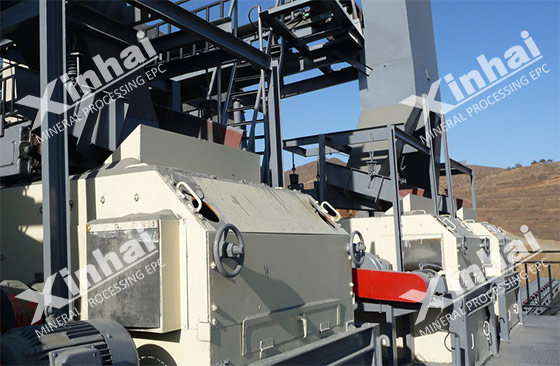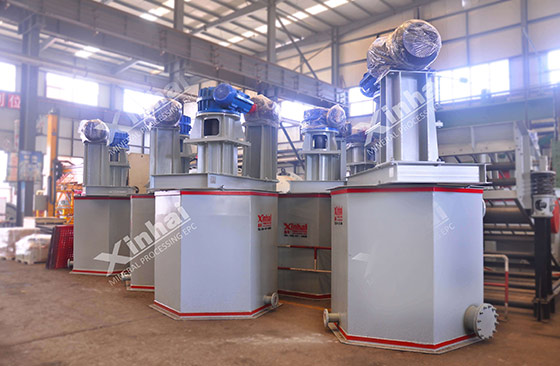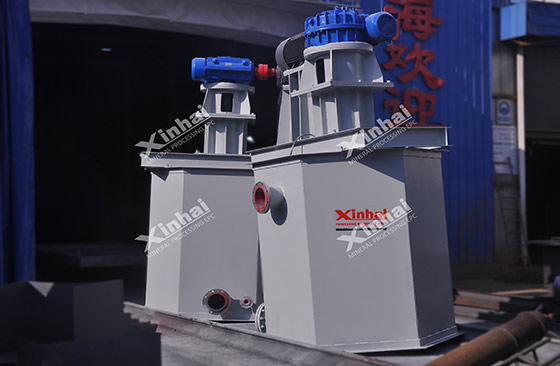
The chemical composition of quartz sand is silicon dioxide (SiO2), while the high-purity quartz sand means that the SiO2 content is higher than 99.9%. As one of the important industrial raw materials, quartz can be widely used in glass, building materials, plastics, electronic materials and other industries. However, for such fields as electronic technology, aerospace, optical fiber communication and military industry, the requirements for the purity of quartz sand are very high. Next, we will sort out the ore dressing process and flow of high-purity quartz sand.

In industrial production, ordinary quartz sand is usually pretreated and then purified into high-purity quartz sand. The purification methods mainly include physical purification, chemical purification and biological purification.
1. Physical Purification of High Purity Quartz Sand
Common physical purification methods of high-purity quartz sand can include water washing classification desliming, scrubbing, gravity separation, magnetic separation and flotation. The impurity minerals in quartz sand can be removed by one or more combinations to meet the purification requirements.
Water washing - staged desliming/scrubbing: During the ore dressing process of quartz sand, the particle size smaller than 0.1mm is usually called slime. As the particle size becomes smaller, the grade of silicon dioxide will become lower and lower, while the impurity ore will be relatively more. Therefore, the impurity minerals can be removed by water washing classification desliming or scrubbing to improve the grade of quartz concentrate.
Gravity concentration: it mainly uses the existing differences in relative density, particle size, shape, etc. between particles of minerals to make them produce different movement speeds and distribute in different directions under the action of water and centrifugal force to realize the separation of minerals.

Magnetic separation: magnetic separation equipment is mainly used to remove hematite, limonite, biotite and other magnetic minerals in the minerals by taking advantage of the magnetic separation difference between quartz and impurities.
Flotation: use reagents and flotation equipment to change the surface property difference between minerals, select high-purity quartz sand under acidic conditions, and remove pure fine particles of hematite, biotite, garnet, aluminum minerals, etc.
2. Chemical Purification of High Purity Quartz Sand
The chemical purification methods of high-purity quartz sand mainly include acid leaching method and alkali leaching method. The purification effect of high-purity quartz sand is better.
Acid leaching: the commonly used acids are mainly sulfuric acid, hydrochloric acid, nitric acid, hydrofluoric acid, etc. When the acid is relatively thin, the removal effect of iron, aluminum, magnesium and other impurities is better. When the acid is concentrated, the removal effect of titanium, chromium and other impurities is good.
Alkali leaching: Alkaline solutions such as sodium hydroxide or sodium carbonate are commonly used to dissolve aluminous silicate impurity minerals to achieve the purpose of purifying quartz sand.

3. Biological purification of high-purity quartz sand
The biological purification method of high-purity quartz sand mainly adopts microbial leaching purification. The impurities on the surface of quartz sand can be separated from the quartz mother body through oxidation, dissolution and decomposition by using the physiological functions of microorganisms and their metabolites to achieve the purification of quartz sand.
In the ore dressing process, the production line flow of high-purity quartz sand mainly includes: crushing - manual separation - classification - magnetic separation - flotation - scrubbing - acid leaching (or washing) and other processes.
Quartz sand crushing/manual selection: this process is mainly used to break the raw ore to a certain size, so as to realize the preliminary dissociation of quartz sand and gangue minerals. Generally, two-stage crushing process is adopted, and jaw crusher is used first for coarse crushing. The crushed products are transported by belt to the vibrating screen for screening, and the qualified particle size is sent to the cone crusher for fine crushing. Before fine crushing, manual selection will be provided for belt transportation. Qualified quartz placer blocks are selected by color discrimination. This part of minerals will be sent to the next link together with the finely crushed products. The unqualified materials in the screening process will continue to return to the jaw crusher for re-crushing.
Grading: according to the particle size distribution and main particle size of impurities in the mineral, the grading is to separate the particle size with high impurity content by screening machine, so as to separate useful minerals from impurities.
Magnetic separation: a dry magnetic separator with a magnetic field intensity of 10000Oe is used for primary separation to remove garnet, hematite, limonite, ilmenite and their associated particles from quartz sand.

Flotation: It is used to remove mica and Fe2O3 from quartz. H2SO4 is used as the adjusting agent, pH=2.5~3, sodium petroleum sulfonate as the collector, and terpineol oil as the foaming agent to achieve flotation.
Scrubbing: The quartz sand obtained by magnetic separation may also contain some small iron containing impurities and quartz sand to form inclusions, which need to be removed by scrubbing. Prepare 35%~55% slurry with water, add scrubbing agent (water glass), scrub in scrubbing ore, and then wash with clean water to obtain quartz sand.
Acid leaching: after magnetic separation and flotation, there are impurities in quartz in the form of spots or inclusions. To remove this part of impurities, acid leaching treatment is required, and different acids are mixed to remove different impurities.

Washing: after acid leaching, there is soluble impurity residue on the surface of quartz sand, which needs to be removed by washing. After acid leaching, the mineral is washed to diffuse impurities and residual liquid on the quartz surface to the liquid phase, and then the washing is completed.
The above mainly introduces the ore dressing process and flow of high-purity quartz sand. In the concentrator, according to the different ore properties and impurity types of quartz sand, the ore dressing process methods are different. If you want to obtain high-purity quartz sand, it depends on its ore properties. Therefore, Xinhai suggests that only by designing and customizing a suitable process plan and a suitable high-purity quartz sand production line flow for it through beneficiation test and analysis can we obtain quartz sand with high return on investment.
To find out more about our products and solutions, please fill out the form below and one of our experts will get back to you shortly.